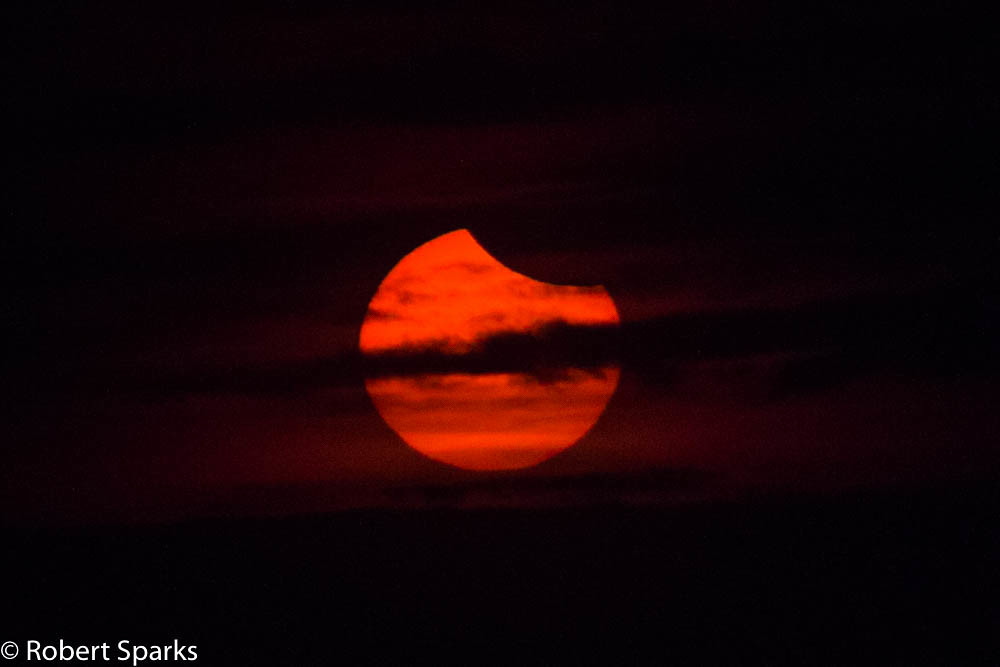Europe, the Middle East, and northeast Africa will see the final partial solar eclipse of 2022 next Tuesday.
When it comes to eclipses, a close shave is better than nothing at all. Just such event happens this coming Tuesday on October 25th when the outer shadow of the Moon grazes the northern hemisphere of the Earth, resulting in a fine partial solar eclipse for Europe and surrounding regions.

The eclipse one of only two solar eclipses for 2022, both of which are partial. Totality on October 25th juuuuust misses grazing the Arctic region of the Earth by a little over 400 kilometers. Viewers with clear skies can expect to see the bulk of the Moon slowly take a Pacman-like ‘bite’ out of the Sun, before receding from view. Most of Europe will see about ~50% of the Sun obscured by the Moon at mid-eclipse.

Solar eclipses occur when the Moon passes directly between the Earth and the Sun. The Moon’s orbit is inclined a little over five degrees relative to the ecliptic, meaning that it ‘misses’ the Sun on most passes. When the nodes—the imaginary points where the orbit of the Moon and the ecliptic plane meet—line up, eclipses can occur, with a solar eclipse at New Moon and a lunar eclipse near Full. This sort of eclipse season happens about twice a year.

When those nodes are just slightly misaligned, however, a partial eclipse occurs. You see this effect next week, when the Moon reaches its descending node almost 20 hours after the partial solar eclipse, marking the start of the final eclipse season for 2022.
The eclipse starts over Iceland, when the outer penumbral shadow of the Moon touches down at 8:58 Universal Time (UT). From there, the shadow moves to the southeast over Europe and spills out over northeastern Africa and the Middle East. Maximum eclipse occurs over Siberia at 11:00 UT, with the Sun 86% covered. The eclipse ends over the Arabian Sea at 13:02 UT, a little over four hours after it began.


Tales of the Saros
This particular eclipse is member 55 of the 73 eclipses in Solar Saros Series 124, which started all the way back on March 6th, 1049 AD. This particular saros is an older one, and produced its last total solar eclipse on September 22nd, 1968, and will be partial only from here on out until its final eclipse on May 11th, 2347.
Another famous member of the series (47 on July 21st, 1878) passed over Wyoming territory, and featured an expedition attempting to glimpse the hypothetical inter-mercurial planet Vulcan.
Ask yourself at mid-eclipse: would you notice something was askew in the sky, if you didn’t know beforehand? Certainly, the midday Sun is still pretty darned bright…even when it’s knocked down by half. Unlike totality, safety precautions must be taken during all stages of a partial solar eclipse. NASA has a thorough ‘eclipse safety’ page, relevant to any solar eclipse. You can also safely observe a partial solar eclipse via projection… just be wary of overheating optics. Also, be sure to check out the shadows cast by trees or lattice-work for tiny crescent suns, as the gaps between leaves etc. act like dozens of little pin-hole projectors (spaghetti strainers work great for this!).

The best shots for a partial solar eclipse always occur when the Sun is low to the horizon. This places the eclipse near foreground objects, making for great ‘solar shark fin’ captures. Next Tuesday’s eclipse favors Iceland with the Sun rising at dawn, and a line through India, Pakistan and central Asia setting at dusk.

Looking from one week out, weather prospects for Europe looks to be a tossup, with clouds over the United Kingdom and broken clouds over France and Germany, giving way to clear skies eastward. But don’t despair: you don’t need cloud free skies to view the eclipse: just a clear view of the Sun. Solar activity seems to be at a lull with few sunspots currently turned Earthward, though that could certainly change come next week, as we’re in the active zone for Solar Cycle Number 25. Sunspots always add to the visual appeal of a partial solar eclipse.

Clouded out, or live in the wrong hemisphere? You can still catch the eclipse live, courtesy of astronomer Gianluca Masi and the Virtual Telescope Project, who will have the event streaming live from Italy come eclipse day.
Also, expect webcasts from the Royal Greenwich Observatory in London, and the Reims Planetarium in Paris, as well.
Don’t worry North and South America: you’ll get your turn in two weeks on November 8th, when a total lunar eclipse graces the Pacific Rim region, nearly opposite to the October 25th partial solar eclipse.
More to come!
Lead image credit: A partial solar eclipse from 2016. Image credit: Rob Sparks

